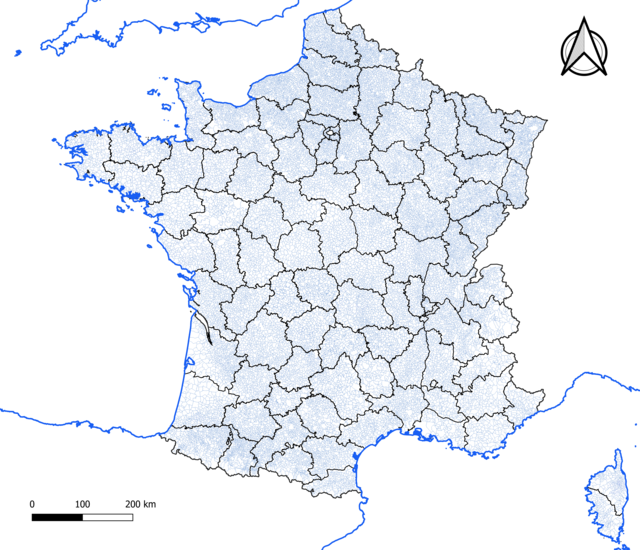Communes of France: Difference between revisions - Wikipedia
 Article Images
Article Images
Content deleted Content added
m |
|||
Line 141: In metropolitan [[France]], the average area of a commune in 2004 was {{convert|14.88|km2|sqmi|sigfig=3}}. The [[median]] area of metropolitan France's communes at the 1999 census was even smaller, at {{convert|10.73|km2|sqmi|sigfig=3}}. The median area gives a better sense of the size of a ''typical'' mainland France commune than the average area since the average includes some very large communes. In [[Italy]], the median area of communes (''[[Comune|comuni]]'') is {{convert|22|km2|sqmi|abbr=on}}; in [[Belgium]] it is {{convert|40|km2|sqmi|abbr=on}}; in [[Spain]] it is {{convert|35|km2|sqmi|abbr=on}}; and in [[Germany]], the majority of [[States of Germany|''Länder'']] have communes ([[States of Germany#Municipalities (Gemeinden)|''Gemeinden'']]) with a median area above {{convert|15|km2|sqmi|abbr=on}}. [[Switzerland]] and the [[States of Germany|''Länder'']] of [[Rhineland-Palatinate]] The communes of France's [[département d'outre-mer|overseas ''départements'']] such as [[Réunion]] and [[French Guiana]] are large by French standards. They usually group into the same commune several villages or towns, often with sizeable distances among them. In Réunion, demographic expansion and sprawling urbanization have resulted in the administrative splitting of some ''communes''. | |||